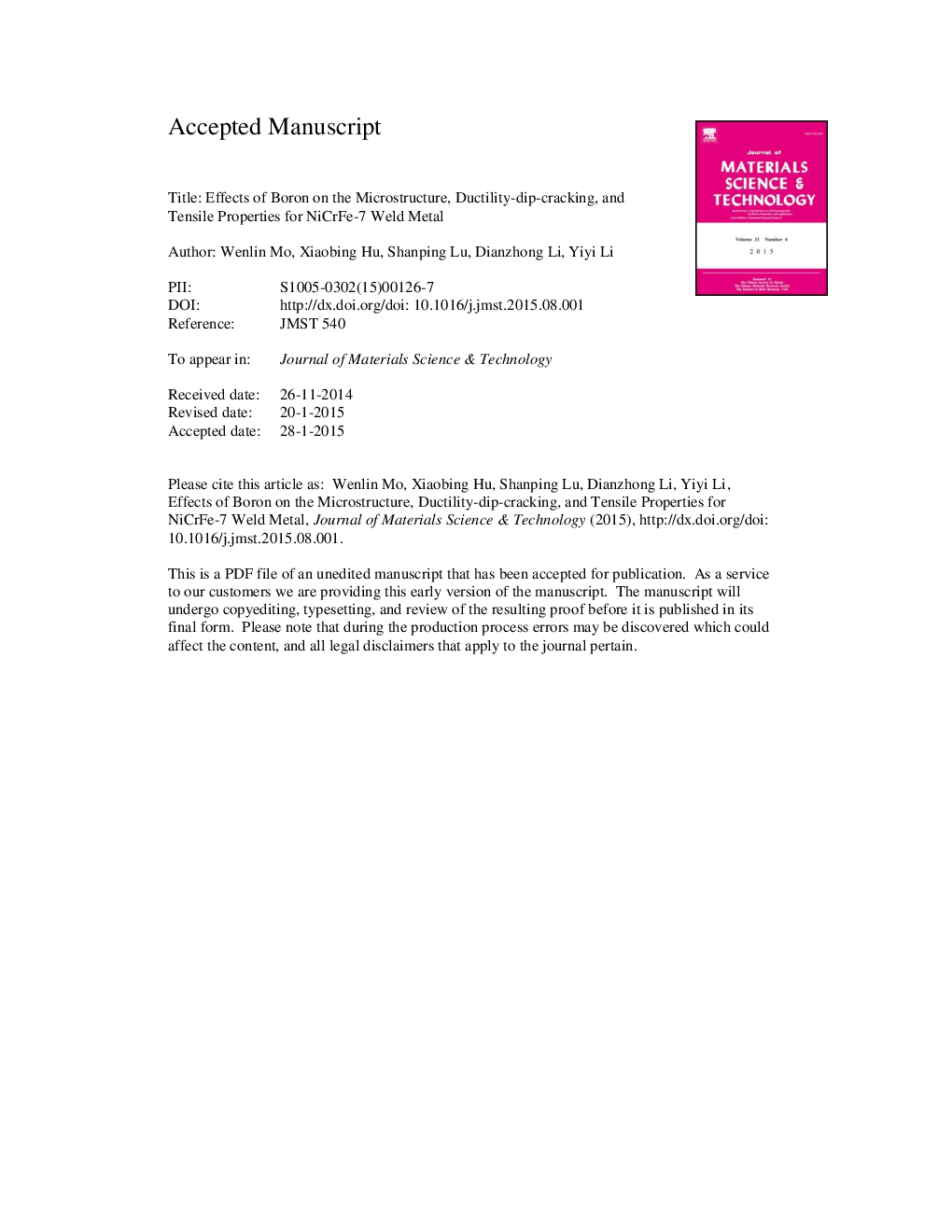| Article ID | Journal | Published Year | Pages | File Type |
|---|---|---|---|---|
| 1555822 | Journal of Materials Science & Technology | 2015 | 17 Pages |
Abstract
The distribution of boron and the microstructure of grain boundary (GB) precipitates (M23(C, B)6 and M2B) have been analyzed with their effects on the susceptibility of ductility-dip-cracking (DDC) and tensile properties for NiCrFe-7 weld metal, using optical microscopy (OM), secondary ion mass spectroscopy (SIMS), scanning electron microscopy (SEM), and transmission electron microscopy (TEM). The results show that boron segregates at GBs in NiCrFe-7 weld metal during the welding process. The segregation of boron at GBs promotes the formation of continuous M23(C, B)6 carbide chains and M2B borides along GBs. The addition of boron aggravates GB embrittlement and causes more DDC in the weld metal, by its segregation at GBs presenting as an impurity, and promoting the formation of larger and continuous M23(C, B)6 carbides, and M2B borides along GBs. DDC in the weld metal deteriorates the ductility and tensile strength of the weld metal simultaneously.
Keywords
Related Topics
Physical Sciences and Engineering
Materials Science
Materials Chemistry
Authors
Wenlin Mo, Xiaobing Hu, Shanping Lu, Dianzhong Li, Yiyi Li,
